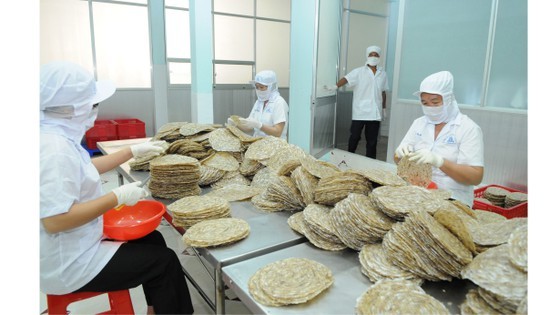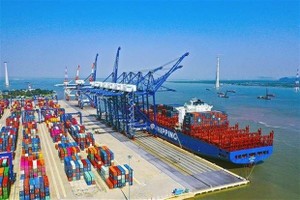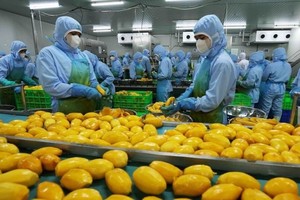
The global crisis
About 500 int’l delegates on November 18 attended the 2020 Export Forum on shifting the global supply chains and sustainable development post-Covid. The forum was held by HCMC Investment and Trade Promotion Center.
At the forum, according to the World Bank (WB), developing countries have to face with "strong headwinds" brought about by the epidemic. Covid-19 accelerated the trend of global trade, GDP and productivity slowdowns.
Representatives from the World Bank Group (WBG) stated how developing countries are fighting an uphill battle brought about by the epidemic which stagnated global trade, GDP growth and productivity.
The WBG also predicted that global GDP will decrease by 5.2% in 2020, which would be the deepest recession in 8 decades and the 4th deepest of 14 global recessions in the past 150 years.
In the same report, they said commodity trade could shrink 13%-32% in 2020. Per capita income this year is also expected to decline in 93% of all countries.
Major sources of development capital like FDI, indirect investment and remittances have all seen a sharp decline. The inflows of external private finance into developing economies could be reduced by US$700 billion compared to 2019, exceeding the impact of the 2008 global financial crisis by 60%. FDI inflows into emerging markets and developing economies will also go down by 21.4% this year.
What’s more, important int’l supply chains are over-concentrated in several specific countries, notably China, causing the supply chain to seriously break down when the pandemic hit.
The role of Vietnam
Director of Baker & McKenzie Vietnam Co., Ltd. and American economist Frederick R. Burke at the forum noted that Vietnam’s macroeconomic indicators shows huge potential for growth despite the impact from the pandemic.
As of now, Vietnam is one of the most open economies in the world with great opportunities for new supply chains, with 13 global free trade agreements (FTAs) already in effect and an RCEP agreement on the way.
FDI investment into Vietnam within the first 6 months of 2020 reached nearly US$16 billion, down 15% year-on-year but still better than the average global drop rate of 30%-40% in 2020.
However, Vietnam’s participation in global value chains (GVCs) is still lacking compared to other ASEAN countries. According to the World Bank, Vietnam in 2018 only generated US$20.4 billion through GVCs, ranking 53rd out of 174 countries.
At the same time, the nation’s degree of participation in complex manufacturing processes remains low. According to the 2020 World Development Report (WDR), it is currently at the “limited processing-manufacturing” level and needs to move forward in GVCs to increase productivity.
Numbers show Vietnam’s GVCs account for 66% of commercial transactions, but localized trades only take up 28% of the total trade turnover. Not only that, the country’s economy is hyper-focused on specific markets such as textiles, electronics, chemicals and metals, which in total accounts for 2/3 of national trade.
At the same time, the 4 largest markets for Vietnamese manufacturers are China, Japan, Korea and the United States which account for 60% of total trade turnover. The top 4 corporations in the country are Samsung, Foxconn, Intel, Panasonic which account for 70% of trade turnover in GVC. This also means that 70% of Vietnam’s export turnover is earned by FDI enterprises.
It is estimated that every 1% increase in participation in GVC will increase per capita income by more than 1% in 2020, twice the amount earned from traditional trades.
Experts believe that Vietnam should adjust policies based on close association between public and private investment, and work hard to attract investors when they seek providers outside of China to diversify its GVC.
They also suggest to focus on the training of high-quality workers and promoting higher level education if one wants to move on from product assembly.
To grow ancillary industries, it is necessary to reduce logistic costs, build connecting infrastructures, improve administrative procedures, and improve the role of economic associations in connecting businesses.
























